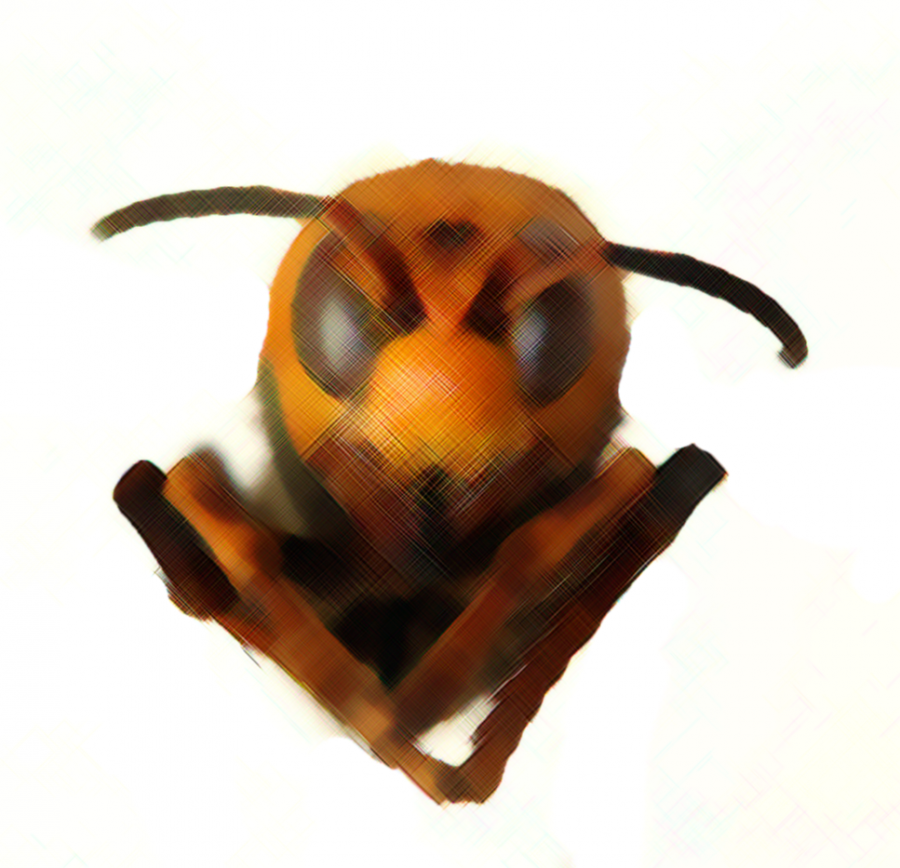Newly discovered “murder hornets” on the loose
May 28, 2020
Along with the devastating impacts of COVID-19, a new source of fear has been discovered — the notorious ‘Murder Hornets.’ The Asian Giant Hornet has recently caused alarm in America, as these 2-inch hornets have lately been found near Washington from their roots in Native Asia.
Murder Hornets are currently the longest hornet species in the world and usually have tiger-like stripes along their back, with a mixed coloration of yellow-orange and black, according to the Washington State Department of Agriculture. These hornets are usually found on the ground, unlike other flying bugs. They are about the size of an average person’s thumb – approximately two inches long.
The scientific name of it is Vespa mandarinia. It originally got its nickname of the “murder hornets” from their ability to kill an entire beehive and their ability to sting humans to death.
Jun-ichi Takashaki, a researcher at Kyoto Sangyo University, reassured people that although this is true, the hornets don’t attack unless they feel threatened. Potential ways to threaten them include sudden movement using your hand or a swatting device, which causes them to think they are in danger.
“Murder hornets can attack anytime and they don’t die when they sting; they have about ten stingers so they can keep attacking,” said Shaun Munshi, a junior at Dougherty Valley High School with a big fear of hornets.
When people get stung by murder hornets, it creates searing pain, quickly followed by a large amount of swelling. Their stingers are a quarter of an inch long, whereas the average honey bee’s stinger is 1.6 millimeters long.
What makes the murder hornet’s sting especially painful is the venom. According to Inverse, their sting contains a specific neurotoxin that can sometimes lead people into having anaphylactic shock.
Conrad Bérubé, a Canadian entomologist, had gotten stung by a Murder Hornet as he was trying to eliminate a nest on an island. “It was like having red-hot thumbtacks being driven into my flesh,” Bérubé explained.
Along with Bérubé, a wildlife educator on Youtube, more commonly known as “Coyote Peterson”, also got stung by a murder hornet. He said that the “searing” pain “immediately came.” He also remarked that the sting of the murder hornet far surpassed the tarantula hawk, another deadly hornet ranked two out of four on a pain level.
Not only are hornets a feasible threat to humans, but also a threat to honey bees. The hornets use their mandibles to decapitate honey bees at an alarming rate. In a couple of hours, they are able to destroy the entire beehive.
As the murder hornet population is predicted to increase, many entomologists and beekeepers are worried about the impact of the hornets, as honeybees are crucial for humans to live. In order to prevent the spread of an invasive species, many of them are teaming up to find ways to reduce the impact and spread of the hornets.
Some of the solutions included exterminators getting rid of the beehives of the murder hornets that are found in some places. However, Chris Looney, a Washington State entomologist, had found more sustainable and efficient ways to exterminate these species completely.
For instance, Dr. Looney found one idea to place traps in places where murder hornets most likely would create nests. He had also tried using trackers to track the signature hum of the murder hornets.
“There are plans to possibly use radio-frequency identification tags to monitor where it goes — or simply attach a small streamer and then follow the hornet as it returns to its nest,” claimed Looney.
With the sudden appearance of these harmful species, it is important to keep fully protected when near a few or an entire beehive. Until a sustainable solution is developed to completely get rid of these species, the murder hornets will still remain to be one of the deadliest insects in America, and it is unknown where they will head next.







